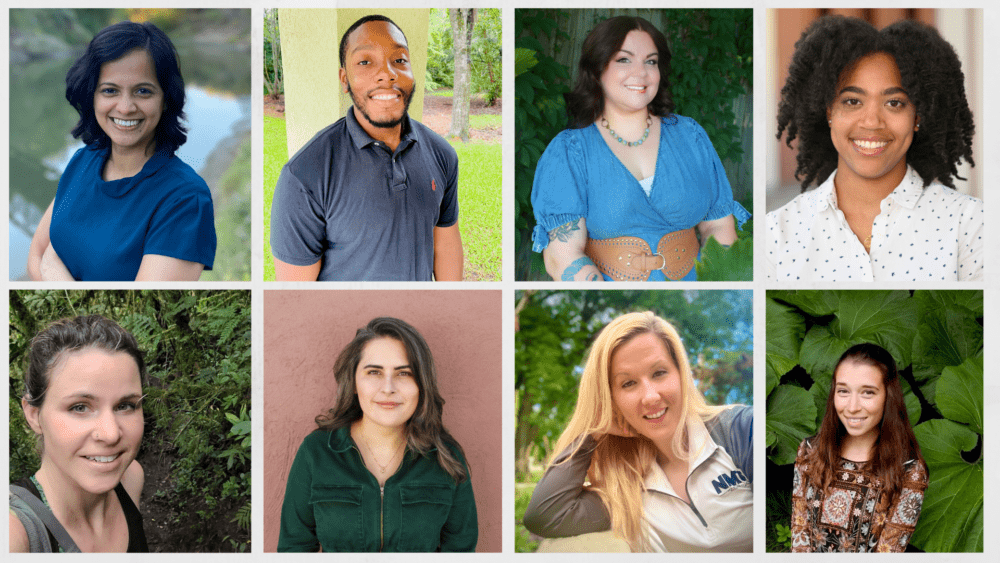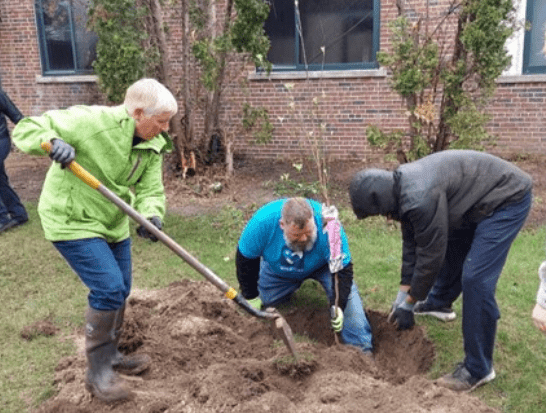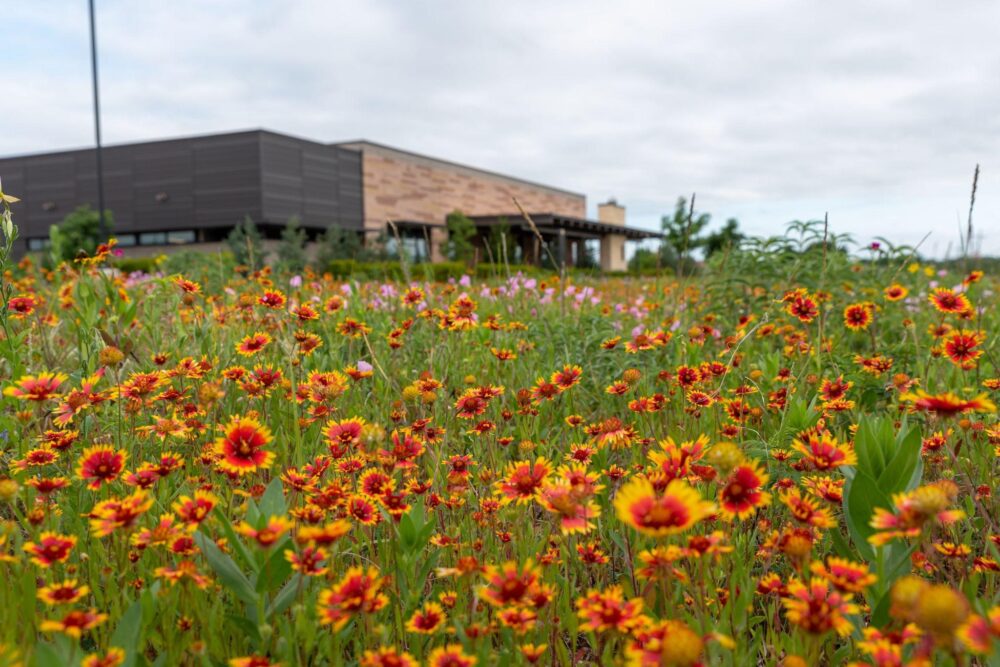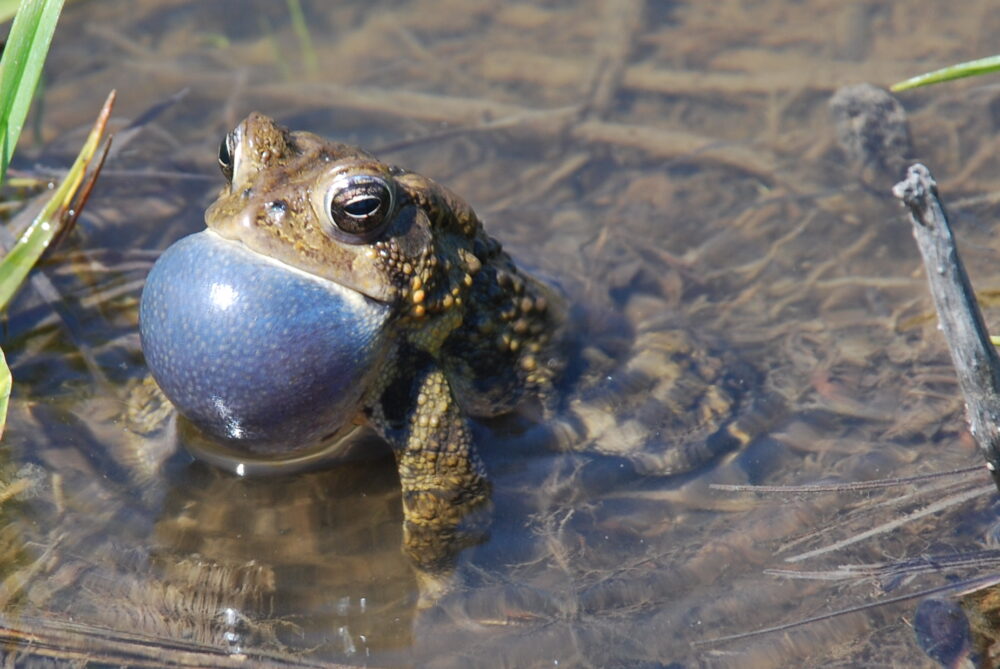We have much more to do and your continued support is needed now more than ever.
National Wildlife Federation Helps Launch Lower Rio Grande Valley Learning Landscapes Initiative

The National Wildlife Federation’s Schoolyard Habitat Program, which uses outdoor nature gardens as classrooms to help students master science and other subjects, is really making its mark in South Texas. Over the past year, five school districts along the Texas-Mexico border have joined together to bring the rich wildlife and unique South Texas landscape into the curriculum of school campuses serving more than 114,000 students. This effort, called the Lower Rio Grande Valley Learning Landscapes Initiative, aims to create National Wildlife Federation Certified Schoolyard Habitats in 50 percent of the schools throughout the districts (including all the elementary schools) and to use them as outdoor classrooms, with an ultimate goal of having all the districts become NWF-Certified Habitat School Districts.
Marya Fowler, Director of Education for National Wildlife Federation’s South Central Region, who has worked with educators in the area to foster the initiative had this to say,
“This is an opportunity for thousands of children to connect with nature, and with a sense of place, in a meaningful way. It turns science into something they are participating in. How cool is it to see a bee pollinating a flower, rather than reading about it, or to have the chance to use math and science to record plant growth, or to collect data on monarch butterflies that will be used by scientists to understand the species?”
Allen Williams, Wildlife Habitat Specialist for the Pharr-San Juan-Alamo Independent School District, one of the participants in the Learning Initiative, echoes Fowler’s enthusiasm. As he told Texas Parks and Wildlife magazine recently, “Our whole approach is to get the kids involved from a young age … and incorporate the [school lessons] into the outdoors,” he says. “They’re already having to learn about life cycles of insects, learning about the food chain, learning plant and animal adaptations. Now they’re not just recalling what they read; they’re recalling what they saw, what they heard, what they smelled, what they experienced.”
On November 7, National Wildlife Federation President and CEO Collin O’Mara joined former First Lady Laura Bush in McAllen at a luncheon to congratulate the participating school districts—Pharr-San Juan-Alamo ISD, McAllen ISD, Donna ISD, Harlingen ISD and IDEA Public Schools—and to celebrate the Learning Initiative with a Conservation Wrangler Award from Texan By Nature, an organization Mrs. Bush founded to advance conservation through innovative business and community partnerships. In addition to the National Wildlife Federation, the school districts are also partnering with the Santa Ana National Wildlife Refuge in Hidalgo County, and the Quinta Mazatlan World Birding Center in McAllen.
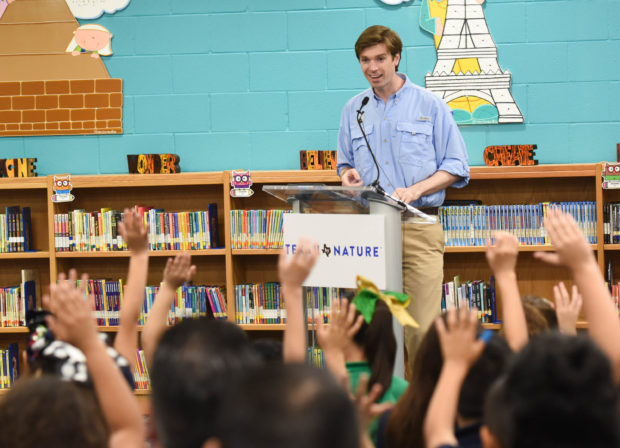
The 40-mile-wide area in which these districts operate, just north of the Rio Grande River, has more than 800,000 inhabitants and includes some of the poorest cities in the U.S. The area is also a crossroads of temperate and subtropical ecosystems, with a huge diversity of plants and wildlife, including birds, insects, and mammals that migrate to and from Central and South America. Tourism is important to the local economy: Thousands of wildlife watchers come to the area each year to see migratory birds found nowhere else in the U.S., or to visit the 100-acre National Butterfly Center, a project of the non-profit North American Butterfly Association in Mission, Texas. McAllen is one of two cities recognized as a Monarch Champion City by the National Wildlife Federation’s Mayors’ Monarch Pledge program (from among 360 participating governmental entities).
Writing in the Feb-March 2018 issue of National Wildlife magazine, O’Mara noted that students he met
“are already well into outdoor learning; they led Mrs. Bush and me through their extensive school garden, pointing out which creatures were attracted to which plants while butterflies fluttered all around us.” He expressed confidence that with committed educators and enthusiastic students like those in the Rio Grande Valley, joined by partners like Texan by Nature, “we will succeed in increasing America’s wildlife populations.”
Find out more about the work going on in the South Central Regional Center!













